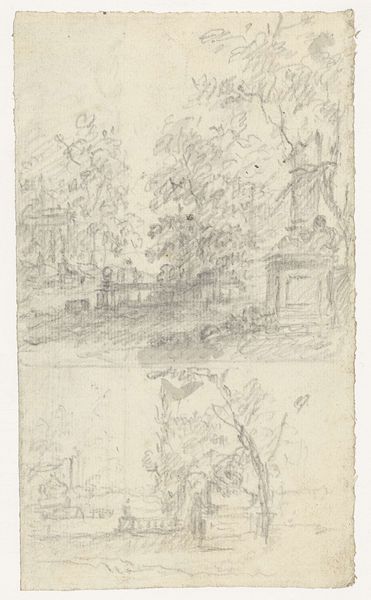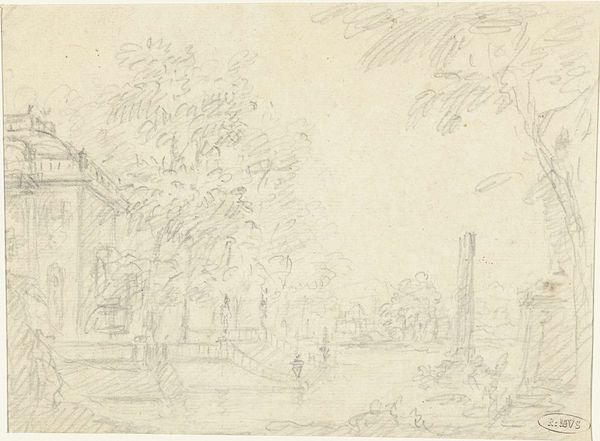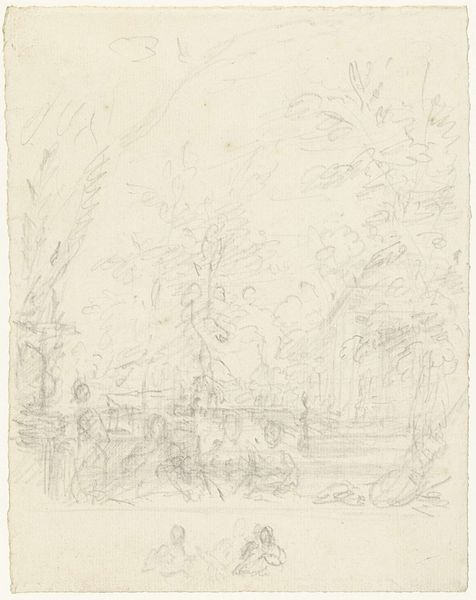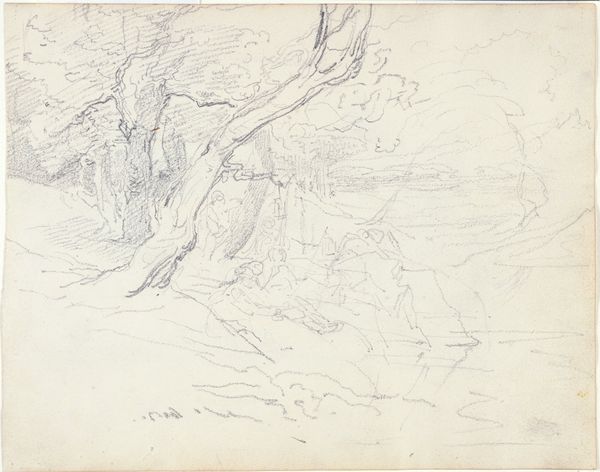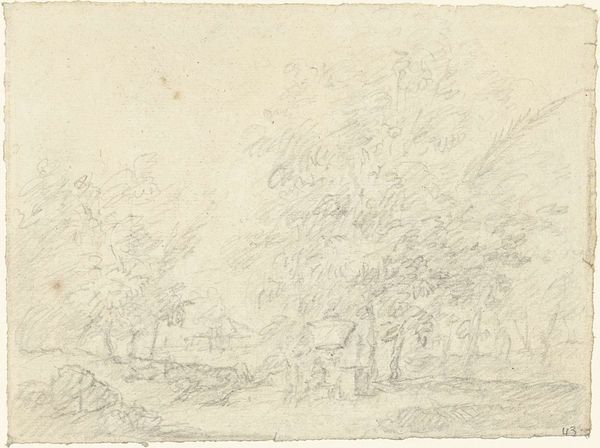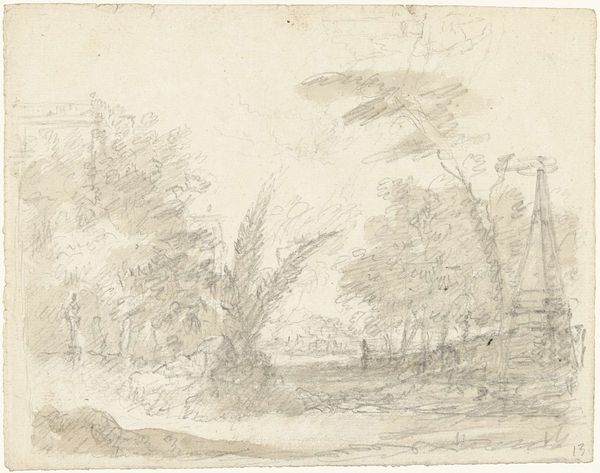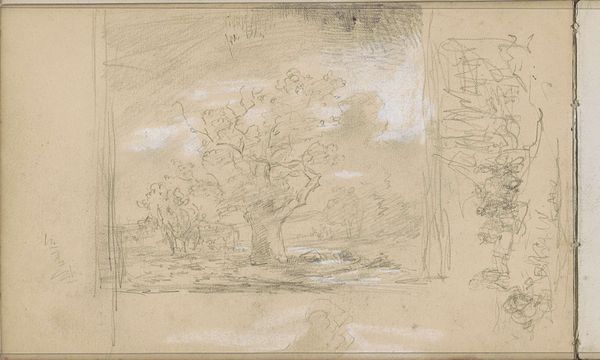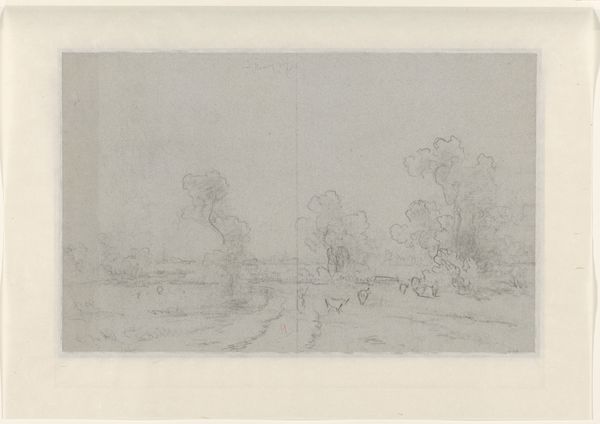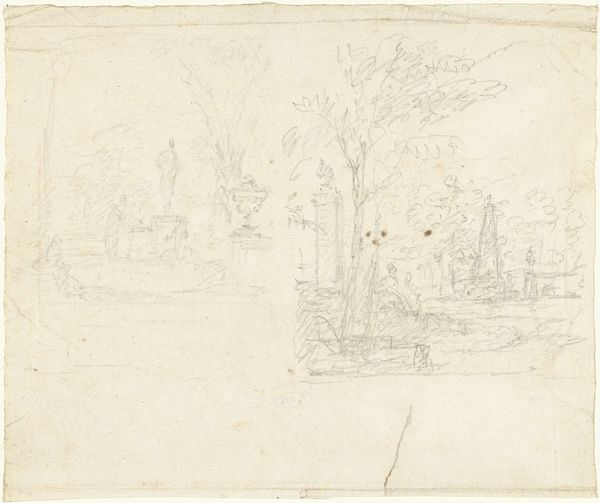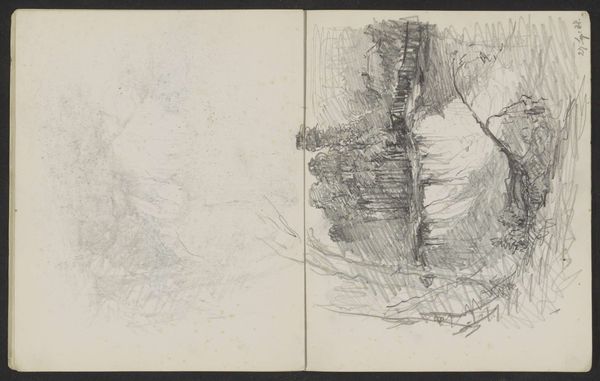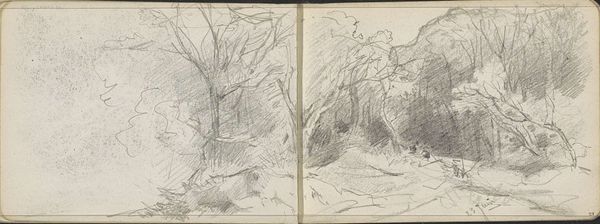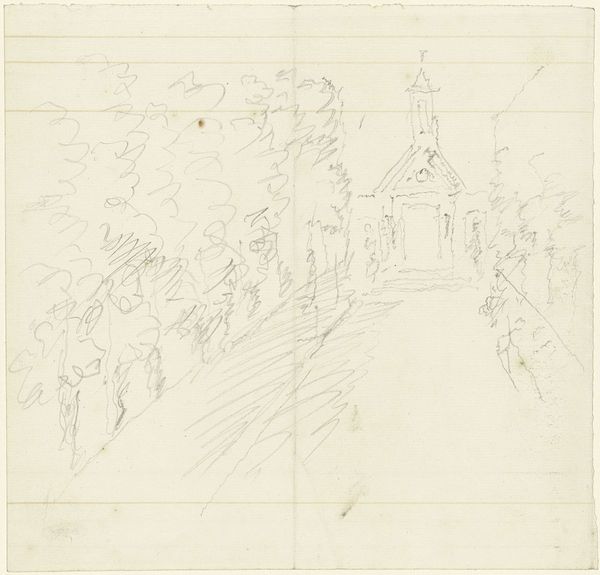
drawing, pencil
#
drawing
#
dutch-golden-age
#
landscape
#
etching
#
pencil
Dimensions: height 208 mm, width 327 mm
Copyright: Rijks Museum: Open Domain
Dionys van Nijmegen created this sketch sheet with two landscapes in the 18th century using graphite. The Dutch landscape tradition had a profound influence on artistic and social values at this time. Here we see two studies, both depicting wooded scenes. One includes a classical statue, a common trope in landscape drawings and paintings of the period. But these are not simply neutral views, they are also statements about property, leisure and taste. During the 1700s, the Dutch elite, who had money and leisure, had a taste for country estates. Owning land was not only an economic advantage but also a status symbol, reflecting one's social standing. By depicting nature with picturesque elements such as classical statues, artists emphasized the owner’s cultural refinement. Art historians use estate records, travel journals, and other period documents to more fully understand the relationship between art and society. By considering art as a product of specific conditions, we gain insight into its historical and social meanings.
Comments
No comments
Be the first to comment and join the conversation on the ultimate creative platform.
